
Excerpt from the Introduction by Owen Hatherley
The young Stalinist and former miner Nikita Khrushchev was the head of the Communist Party of the City of Moscow in the mid-1930s. Effectively, this made him Mayor of the capital, and the head of construction, in which capacity he was the politician in charge of building the Moscow Metro. Writing his memoirs many decades later, he would recall that “we were very unsophisticated. We thought of a subway as something almost supernatural.” He continued: “I think it’s probably easier to contemplate space flights today than it was for us to contemplate the construction of the Moscow Metro in the early 1930s.”
In part, Khrushchev was saying that nothing so complex in engineering terms had been built in the capital of the “‘Workers and Peasants’ State”. This wasn’t just about whether you could build large projects without the instruments of capitalism; it was the measure of a cultural cringe. Could “the Bolsheviks” — as they referred to themselves, even as most of the original Bolshevik leadership were shot or sent to concentration camps — really build a project as ambitious as an Underground system? But he was also talking about the fact that it couldn’t just be another public transport system. It had to be built in a new way. It had to be a Communist space, not just a functional one. It had to articulate the values of the socialist state. And it had to incarnate the Soviet “family of nations”. Like so much else, this soon got very out of hand.
Anyone who knows a bit about Soviet state socialism knows about the Moscow Metro and its system of underground palaces; these awesome, opulent spaces have been a fixture of travel guides since the 1930s, and now they’re equally prevalent on Instagram accounts. Much less known is that these marble-clad portals in the centre of the capital are just the most visible elements of a gigantic Metro-building project that would gradually expand into more than a dozen different systems across several Republics — Russia, Ukraine, Belarus, Georgia, Armenia, Azerbaijan, Uzbekistan. After Moscow came St Petersburg, Kyiv, Tbilisi, Baku, Kharkiv, Tashkent, Yerevan, Minsk, Nizhny Novgorod, Samara, Novosibirsk, Yekaterinburg, Dnipro. “Metro-Trams” with palatial underground halls were built in Krivyi Rih and Volgograd; and a miniature “Cave Metro” was built for the tourist site of New Athos, Abkhazia.
Soviet experts were also responsible for engineering Metro systems outside the USSR — in Prague, Budapest, Warsaw, Sofia, Pyongyang, and Calcutta (as it then was), India’s first Metro system in the capital of Communist-governed West Bengal. Soviet Metro building was an enormous project, spanning two continents. An early slogan had it that “the whole country is building the Moscow Metro”, but between the 1960s and 80s this could have been rephrased as “the Moscow Metro is being built in the whole country”. Why, then, was this particular kind of Metro building so important?
Some of this was a political choice, and one which now looks very astute — a privileging of public over private transport, a choice that many cities in the West are now trying to reverse-engineer as they dismantle their 1960s’ road schemes and put back the tram lines they tore out. But there’s so much more than that.
Both the internationalism and the tragedy of the Soviet Metro are subtexts of Hamid Ismailov’s novel The Underground (2014), in which a part-African, part-Khakass Soviet citizen, “without papers” and hence disqualified from actually living in the capital, finds refuge underground from the violent, racist and small-minded reality above. In Sokol, one of the most gorgeous of all the Moscow stations, he reflects on how a system that got it so wrong above, got it so right below: “The Metro is the subconscious of Soviet building; its collective unconscious, its archetype. What was left unrealised — or never fully realised — on the surface was achieved underground”, with channelled movement, clear entry points and exits, and a strict division between controllers, drivers, conductors and obedient passengers.
The whole of that totally controlled system could only exist at a remove from the world. It was as if it had been taken out of the equation, deleted from the face of the earth; it existed and at the same time remained invisible; the ideal was achieved, yet it remained otherworldly.” On this, Khrushchev and Ismailov, the Stalinist city boss of the 1930s, and the Uzbek liberal novelist in the 2010s, can agree. The Soviet Metro was not entirely of this earth.
Avtovo, St. Petersburg
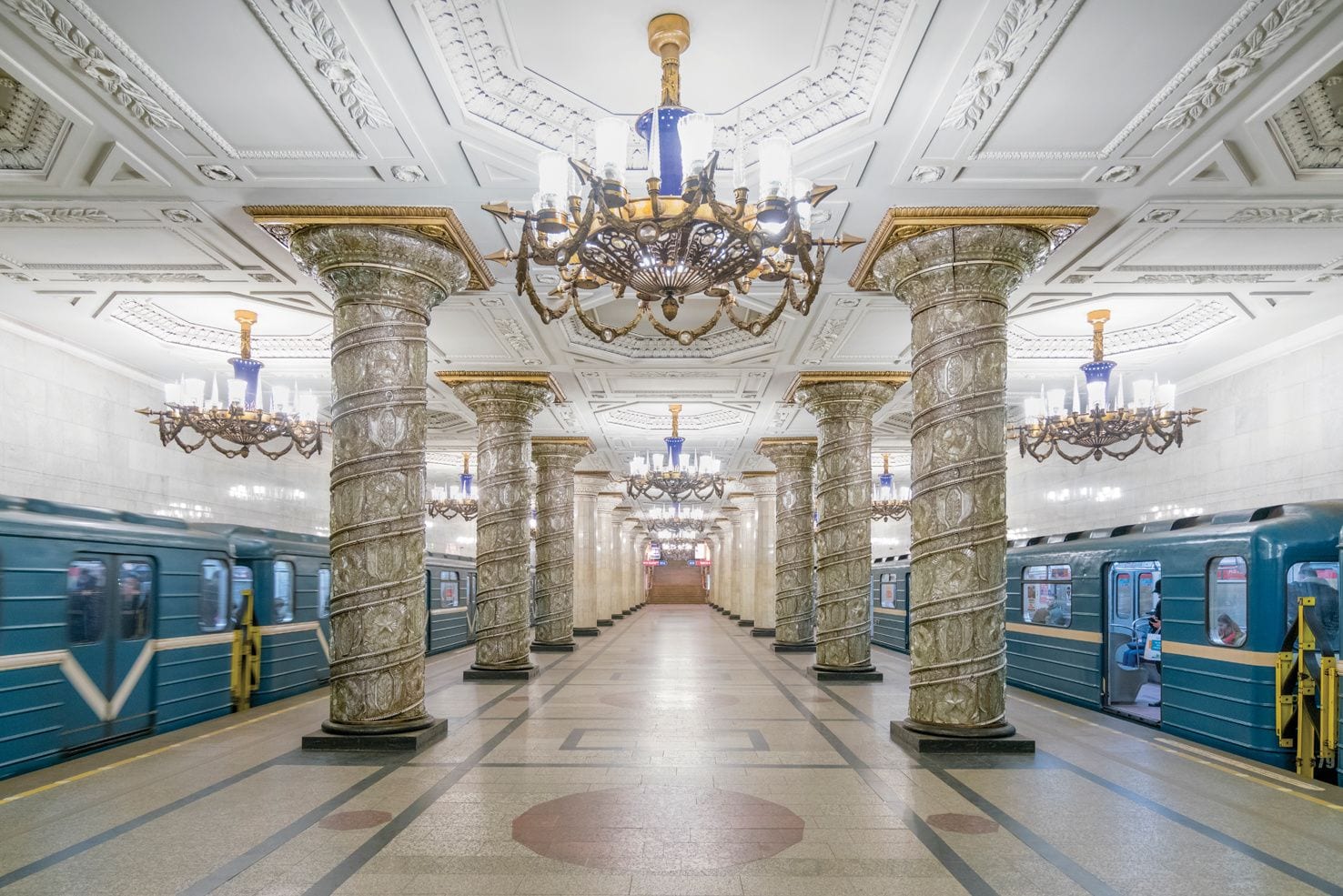
Chkalovskaya, Nizhny Novgorod
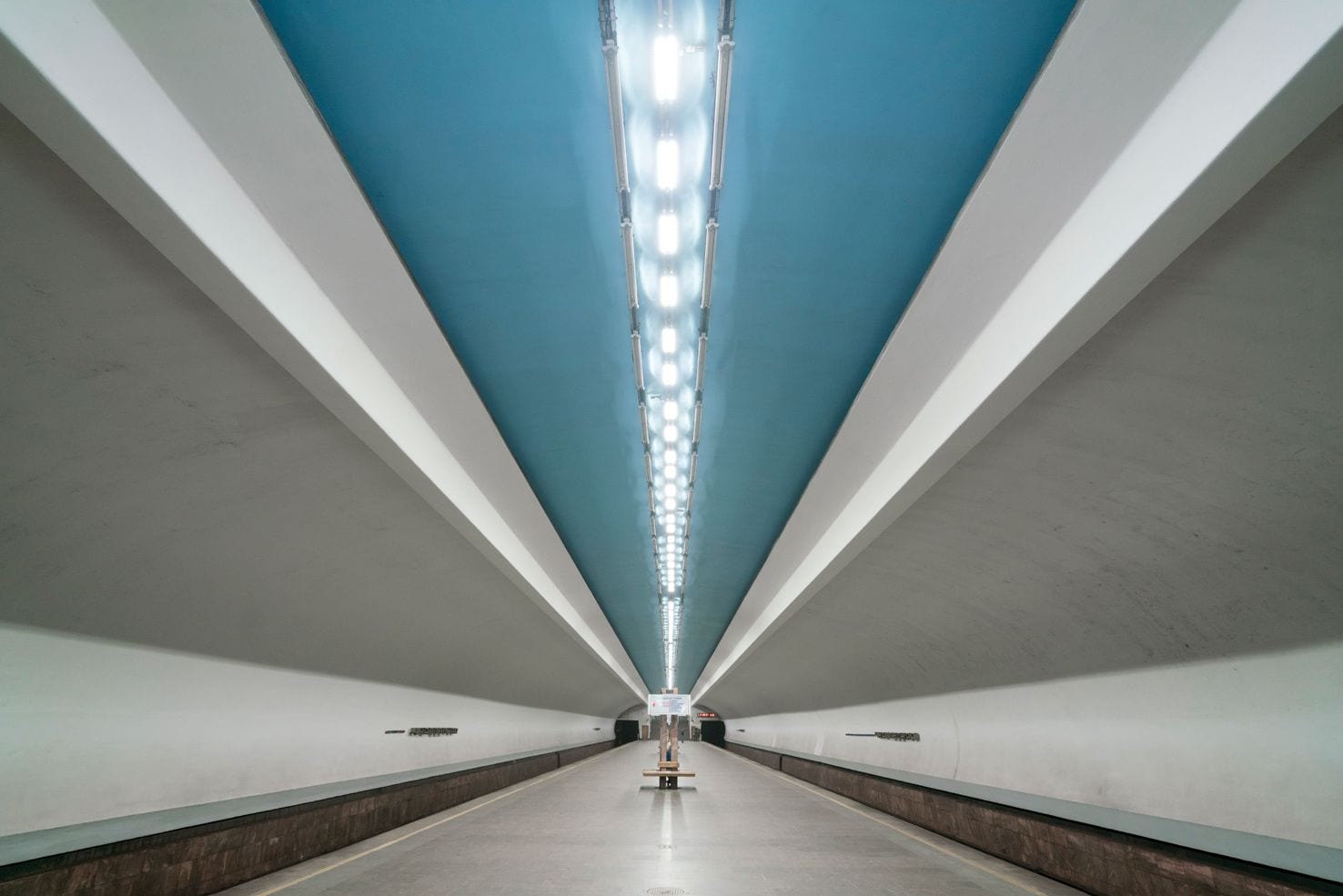
Kastrycnickaja, Minsk
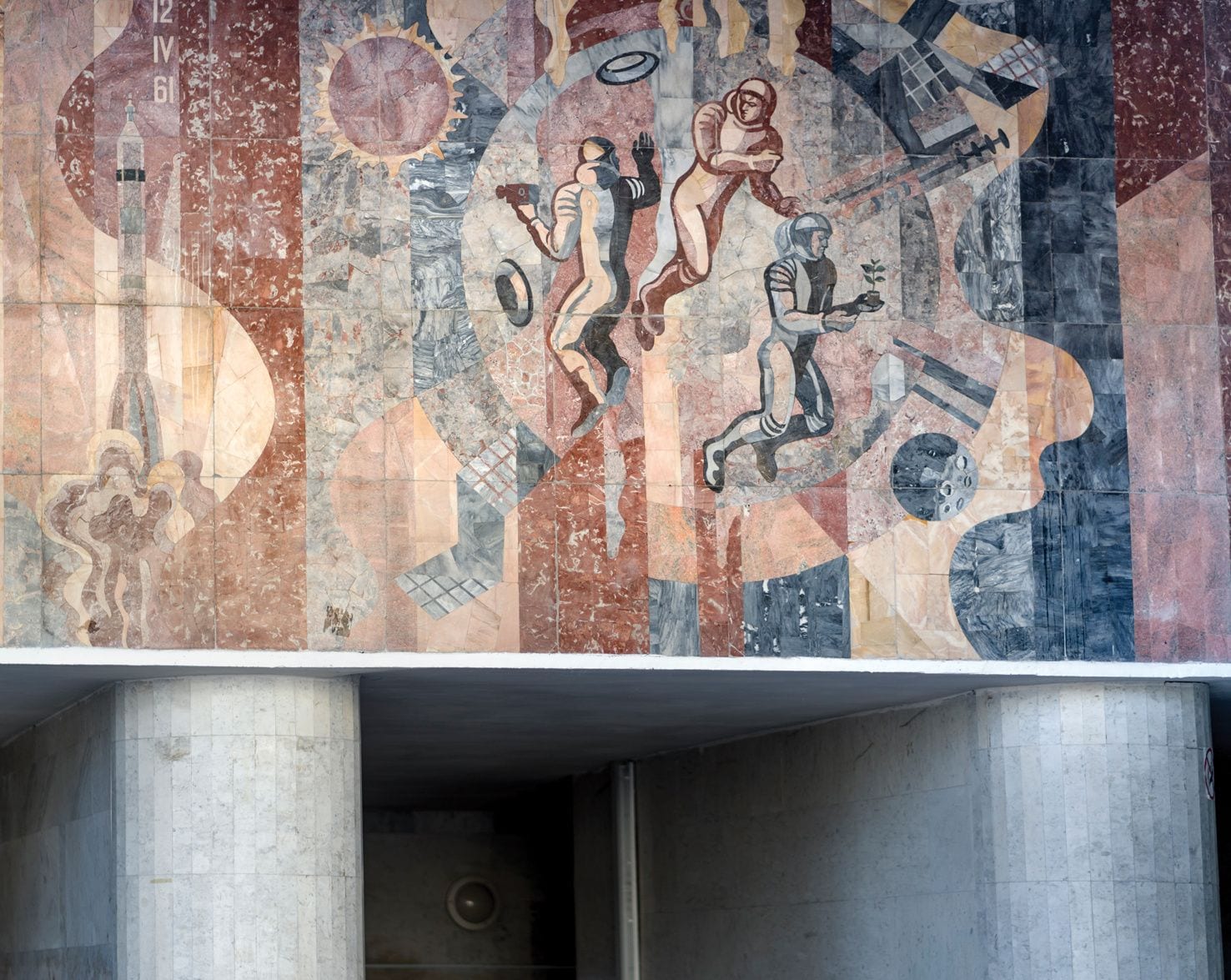
Kyivska, Kharkiv

Novocherkasskaya, St Petersburg
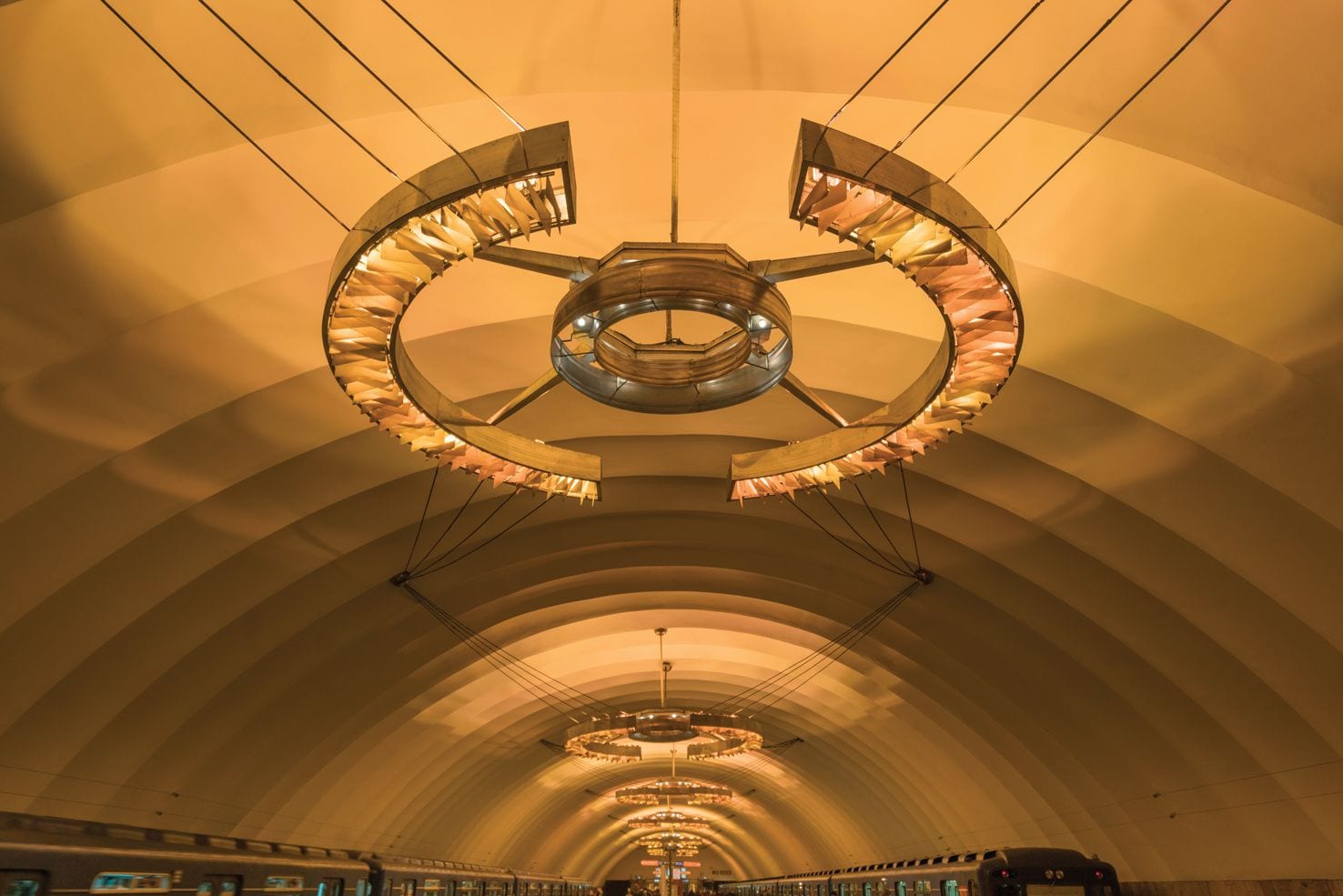
Ulduz, Baku
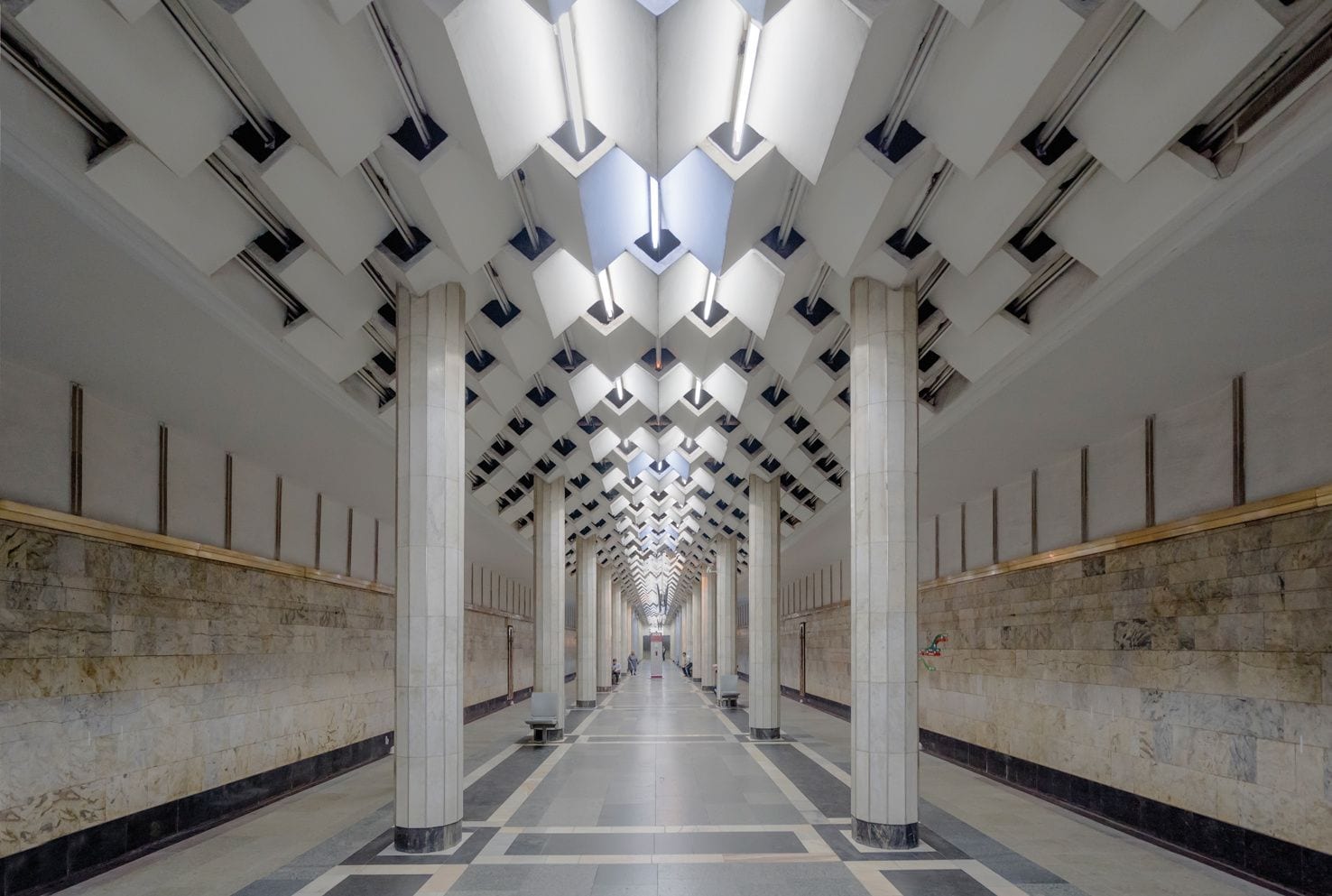
Excerpted from Soviet Metro Stations, by Christopher Herwig (photographer) and Owen Hatherley (author). Copyright © 2019 FUEL Publishing. Excerpted by permission of FUEL Publishing. All rights reserved. No part of this excerpt may be reproduced or reprinted without permission in writing from the publisher.
Following his best-selling quest for Soviet Bus Stops, Christopher Herwig has completed a subterranean expedition – photographing the stations of each Metro network of the former USSR. From extreme marble and chandelier opulence to brutal futuristic minimalist glory, Soviet Metro Stations documents this wealth of diverse architecture. Along the way Herwig captures individual elements that make up this singular Soviet experience: neon, concrete, escalators, signage, mosaics and relief sculptures all combine to build an unforgettably vivid map of the Soviet Metro.
With an essay by leading architecture, politics and culture author and journalist Owen Hatherley.
- Soviet Metro Stations | Archive | Publishing / Bookshop | FUEL
- Soviet Metro Stations ARTBOOK | D.A.P. 2019 Catalog FUEL ...
- Owen Hatherley
- Owen Hatherley
- Owen Hatherley
- Owen Hatherley - Wikipedia
- SOVIET BUS STOPS + – Christopher Herwig Photographer
- Soviet Metro Stations: Owen Hatherley, Stephen Sorrell, Damon ...
- Christopher Herwig Photographer – Author of Soviet Bus Stops ...


![Call for Papers: All Things Reconsidered [MUSIC] May-August 2024](https://www.popmatters.com/wp-content/uploads/2024/04/all-things-reconsidered-call-music-may-2024-720x380.jpg)



